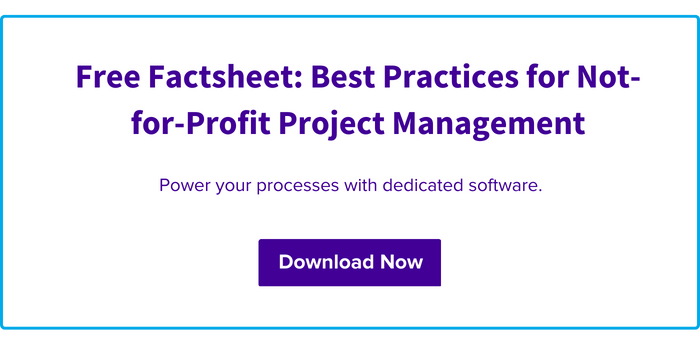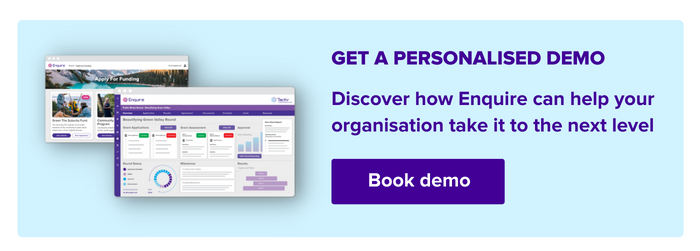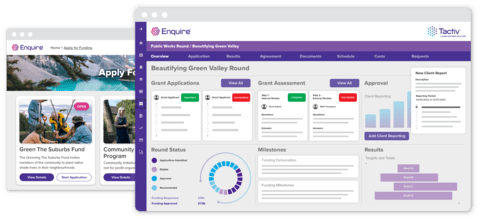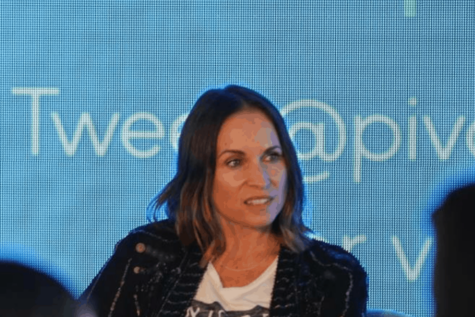An Introduction to Not-For-Profit Software
What is Not-for-Profit Software?
Not-for-profit software is a specialised tool designed specifically to address the unique needs of not-for-profit organisations, providing features such as fundraising and donor management, outcome reporting, and grant management. Not-for-profit software is often cloud-based, meaning that it can be accessed from anywhere, at any time, which is especially important in today’s digital age of changing workplace arrangements.
This software is crucial because it streamlines the administrative tasks that are essential to running a not-for-profit organisation, allowing teams to spend less time on paperwork and more time on their organisation’s mission. Not-for-profit software also helps to ensure that organisations follow legal and financial regulations, which is essential for maintaining the trust of their funders and the public.
Moreover, not-for-profit software can help organisations better manage relationships with their stakeholders, which are crucial for fundraising efforts. Not-for-profit software such as Enquire include integrated reporting capabilities that enable administrators to share detailed breakdowns of their funding activities with their stakeholders, increasing the likelihood of their continued support of your organisation.
Understanding Not-for-Profit Software
Now we know what not-for-profit software is, and why it is important, let’s dive a little deeper into the different types of not-for-profit software solutions, the key features that these solutions offer and how your non-profit can benefit from them.
Types of Not-for-Profit Software
Not-for-profit software comes in different types, including grant management software, impact reporting software, award and scholarship management software, and not-for-profit project management software. Each of these solutions is designed to cater to the specific needs of not-for-profit organisations.
Grant Management Software
Grant management software is designed to help not-for-profits manage their grant applications and processes. It allows them to track grant applications, deadlines, and reporting requirements, making it easier to comply with legal and financial regulations. Grant management software also helps to streamline the process of submitting and collecting grant applications, tracking the status of grant applications, and monitoring the progress of grants.
Impact Reporting Software
Impact reporting software helps organisations track and report on the impact of their programs and services. This enables them to collect data on program outcomes and impact, which can be used to demonstrate the organisation’s effectiveness and improve future programming. Impact reporting software can also help organisations to communicate their impact to donors, supporters, and the public.
Award and Scholarship Management Software
Award and scholarship management software is designed for not-for-profit organisations managing award and scholarship programs. It assists in the tracking of applicants, managing of award selection, and communicating with recipients. Award and scholarship management software can also be used to track recipient progress, monitor outcomes, and report on the impact of award and scholarship programs.
Disaster Recovery and Relief Software
Disaster recovery and relief software is designed to facilitate rapid disasters and emergency response funding, quickly and effectively. It allows organisations, primarily governments and not-for-profits to collaborate, track and manage relief funding, coordinate volunteers and resources, and deliver funding where it is needed most.
Not-for-Profit Project Management Software
Not-for-profit project management software streamlines the management of projects and programs. It allows organisations to track project timelines, allocate resources, and monitor progress. Not-for-profit project management software can also be used to communicate with team members, collaborate on documents, and share files, making it easier for organisations to work together effectively.
A Summary of Not-for-Profit Solutions
| Software Type | Software Functions | Additional Resources |
|---|---|---|
| Grant Management Software | Track grant applications, deadlines, and reporting requirements. Streamline the process of submitting grant applications. Monitor the progress of grants. Ensure legal and financial compliance. Store and organise grant-related data. | Tactiv’s Ultimate Guide to Grant Management |
| Impact Reporting Software | Collect data on program outcomes and impact Demonstrate the effectiveness of the organisation. Improve future programming. Communicate impact to donors, supporters, and the public. Monitor the impact of the organisation. | What is Impact Reporting? Measuring Social Impact Made Easy
|
| Disaster Recovery and Relief Software | Track and manage relief efforts. Coordinate volunteers and resources. Aid those in need. Respond to emergencies quickly and effectively. Speed up application processing. | Why Disaster Relief Software Is More Important than Ever |
| Award and Scholarship Management Software | Track applicants. Manage award selection. Communicate with recipients. Monitor recipient progress. Report on the impact of award and scholarship programs. | The Top 5 Reasons You Need a Scholarship Management System |
| Not-for-Profit Project Management Software | Track project timelines. Allocate resources. Monitor progress. Collaborate with team members. Share files. | 4 Ways to Enhance Your Non-Profit Project Management |
Benefits of Not-for-Profit Software
Not-for-profit software can provide numerous benefits including improving relationships with funders and the community, tracking grant activity, and managing business processes more effectively. With not-for-profit software, your organisation can increase transparency, build trust, and make it easier for your team to collaborate and manage day-to-day tasks more effectively.
One of the most significant benefits of not-for-profit software is increased collaboration. Many software programs are designed to help team members work together more effectively, share information and resources, and stay up to date with the latest developments. For example, not-for-profit project management software can help teams work together to manage projects and programs more efficiently, while case management software can help social workers and case managers collaborate on cases. The video below showcases how AVPN, Asia’s largest social impact philanthropic network utilised not-for-profit software to enhance their service delivery.
Another key benefit of not-for-profit software is streamlined processes. With software designed specifically for not-for-profits, organisations can automate many of their processes, freeing up valuable time and resources. For example, grant management software can streamline the process of collecting grant applications, monitoring the progress of grants, and ensuring legal and financial compliance. Award and scholarship management software can help organisations manage their award and scholarship programs with ease, from tracking applicants to communicating with recipients and monitoring their progress.
Not-for-profit software can also help organisations track outcomes and demonstrate their impact, which is crucial for fundraising and donor relations. Impact reporting software can help organisations collect data on program outcomes and demonstrate their effectiveness to donors, supporters, and the public. Disaster recovery and relief software can help organisations respond to disasters and emergencies more efficiently, reducing waste, and providing better aid to those in need.
How to Choose the Right Software
Now that you have a better understanding of the various types of not-for-profit software on the market, and some of their key benefits it’s time to start researching the options. Investing in the right software can help you work more efficiently, streamline your processes, and track your impact more effectively. But with so many options on the market, choosing the right software can be a daunting task. In this section, we’ll walk you through the key factors to consider when shortlisting software options, as well as common mistakes to avoid.
Factors to Consider when Selecting Software
Organisational Requirements
When it comes to choosing not-for-profit software, there are a few key factors to consider. First, you’ll want to think about your specific needs as an organisation. What are your pain points, and what do you hope to achieve with the software? Do you need a grant management system, a case management system, or an impact reporting tool? Or perhaps you need a combination of these tools to address multiple needs. Purpose-built tools, like Enquire, are specifically designed for not-for-profits and generally offer more functionality than alternatives that are simply designed to manage a single process.
Data Security
It’s also important to consider the software’s compatibility with your existing systems and infrastructure, as well as any data security concerns. Tactiv is ISO-27001 certified which means we abide by globally recognised data security standards. These considerations also apply to the Enquire software solution. Layered security approaches are built into Enquire’s application architecture, including controls such as role-based access permissions and authentication procedures.
User Friendliness
Another important factor to consider is the software’s user-friendliness. Will the software be easy for your team to learn and use, or will it require extensive training and support? At a minimum you should only be considering not-for-profit software vendors that offer a free trial or demonstration of their solution.
Enter your email below for a free interactive tour of Enquire’s not-for-profit software features
What to Look For When Adopting Not-for-Profit Software
When shortlisting software options, it’s important to avoid common mistakes, such as choosing a solution based solely on price or popularity, without considering whether it’s the right fit for your organisation. It’s also important to avoid overcomplicating your software needs by investing in too many tools.
Training and Support
When using multiple software solutions, your team will likely need to be trained on each system separately. This can be a significant time and resource investment and can also lead to inconsistencies in how different team members use the software. Additionally, when something goes wrong or a team member has a question, they may not know which software provider to turn to for support. Fortunately, most modern not-for-profit software providers maintain a dedicated resources library or support article centre for users to learn more about the system. Enquire also offers a range of training and support options.
Decision-Making
When you’re using multiple software solutions, it can be difficult to get a complete picture of your organisation’s operations and impact. This can make it challenging to make informed decisions about where to allocate resources, which programs to prioritise, and how to improve your operations.


Choosing the right not-for-profit software can make a huge difference in the effectiveness of your organisation. By taking the time to consider your needs, shortlist the right options, and avoid common mistakes, you can ensure that you invest in a software solution that helps you achieve your goals and take your organisation to the next level.
And What to Avoid…
While there are many benefits to adopting multiple software solutions for different aspects of not-for-profit work, there are also several challenges that can arise when these solutions are not integrated into a centralised system. Here are a few key challenges to keep in mind:
Data Fragmentation
One of the main challenges of adopting multiple software solutions is that your data may become fragmented across different systems. For example, if you’re using one software solution for impact reporting and another for program management, you may have to manually transfer data between the two systems, which can be time-consuming and prone to errors. This can make it difficult to get a complete and accurate picture of your organisation’s operations and impact.


Integration Issues
Even when using multiple software solutions that are designed to work together, integration issues may still arise. For example, different software solutions may use different data formats or coding languages, which can make it difficult to pass data seamlessly between systems. This can result in errors, lost data, or inconsistent data.
➔ Free Download: Explore Enquire’s Not-for-Profit Software Integrations – Link Enquire To Your Existing Systems
High Costs
Adopting multiple software solutions can be expensive, especially if you’re paying for each system separately. Additionally, if you need to hire outside consultants or IT specialists to help with integration or training, this can add to the cost. You should also consider time as a major cost when adopting software. Unfortunately, many of the low or no cost not-for-profit software options on the market are rather costly in terms of time. Very few of these systems integrate with one another, and each will require a significant investment in time to learn. Another issue is the fact that a large proportion of these freemium options eventually shift to a paid model, or close shop, meaning you could run the risk of having your data locked up or lost entirely. That’s why it’s often best to bite the bullet and invest in a single, stable system with frequent product updates.
How Not-for-Profit Software Helps with Grant Management
Grants play a vital role in the success of many nonprofit organisations. However, the grant management process can be time-consuming and complicated, making it difficult for nonprofits to effectively manage their grants. Fortunately, not-for-profit software can help organisations streamline their grant management process and improving their chances of securing funding. In this article, we will discuss the importance of grant management for nonprofits and the key features to look for in not-for-profit software for grant management.
Importance of Effective Grant Management for Nonprofits
Effective grant management is critical for the success of nonprofit organisations. Grants provide a significant source of funding for many nonprofits, allowing them to carry out their missions and provide essential services to their communities. Many not-for-profits also provide grants, acting as intermediaries for larger funding organisations like government departments.
However, managing grants can be a complex and challenging process, requiring a high level of organisation, attention to detail, and communication. Poor grant management can lead to missed deadlines, lost funding opportunities, and even financial mismanagement, putting the organisation’s reputation and sustainability at risk.
Key Features in Not-for-Profit Grant Management Software
Not-for-profit software for grant management can help organisations streamline the grant management process and improve their chances of securing funding. When selecting a grant management software, there are several key features to look for, including:
- Grant Tracking: Allowing organisations to track the status of grant applications, deadlines, and reporting requirements.
- Budget Tracking: Tracking grant budgets, including expenses and payments received or spent.
- Collaboration and Communication: Facilitating collaboration and communication between team members, grant funders, and other stakeholders.
- Reporting: Generating reports that meet the requirements of their funders.
- Compliance: Maintaining compliance with grant guidelines and regulations, reducing the risk of financial mismanagement and other legal issues.
By implementing not-for-profit software for grant management, nonprofits can save time and reduce the risk of errors and mismanagement. As a results, this increases their chances of securing funding to carry out their missions.
How Not-for-Profit Software Helps with Impact Reporting
Nonprofits operate to create positive change in their communities. Measuring the impact of their work is a critical part of their mission. Impact reporting helps nonprofits measure and communicate the outcomes of their programs to stakeholders, including donors, grantors, and the community. Impact reporting can be a time-consuming and resource-intensive process, but not-for-profit software can help streamline this task.
Importance of Effective Impact Reporting for Nonprofits
The importance of impact reporting for nonprofits cannot be overstated. Demonstrating the impact of their programs is crucial to securing funding and support from donors and other stakeholders. Impact reporting also helps nonprofits evaluate the effectiveness of their programs. Additionally, it helps to identify areas for improvement. However, the manual process of collecting and analysing data can be overwhelming, especially for smaller nonprofits with limited resources.
Key Features in Not-for-Profit Impact Reporting Software
Key features to look for in impact reporting software include:
- the ability to collect and track data on program outcomes and outputs
- generate customisable reports
- survey and feedback reporting tools
- visual data analysis to further enhance the reporting process
Are you Looking to Implement a New Software Solution?
Implementing not-for-profit software for impact reporting reduces the time and resources spent on impact reporting for not-for-profits. At the same time, it also improves the quality and effectiveness of their reporting. Ultimately, this helps to secure funding and support to continue their important work in the community.
➔ Knowledge Article: 6 Points to Consider When Adopting New Software
Not-for-profit software solutions offer a range of benefits to non-profit organisations, helping them to improve their processes and achieve their missions more effectively. Throughout this guide, we’ve explored the key types of not-for-profit software, their features, and the benefits they can provide to non-profits.
Summary of Benefits by Software Type
| Software Type | Benefits |
|---|---|
| Grant Management | Streamlined application processes, increased transparency and accountability, improved reporting capabilities, better collaboration, reduced administrative costs |
| Impact Reporting | Better tracking and measuring of impact, improved transparency and accountability, more effective communication of achievements, enhanced reporting capabilities, increased stakeholder engagement |
| Disaster Recovery and Relief | More efficient disaster response, improved communication and coordination, better tracking and management of relief efforts, enhanced reporting capabilities, increased collaboration |
| Award and Scholarship Management | Streamlined application processes, increased transparency and accountability, improved reporting capabilities, better collaboration, reduced administrative costs |
| Project Management | More efficient project planning and execution, improved communication and coordination, better resource allocation, enhanced reporting capabilities, increased collaboration |
Final Thoughts on Choosing and Using Not-for-Profit Software
When it comes to selecting and using not-for-profit software, it’s important to carefully consider your organisation’s needs, goals, and budget. Look for solutions that offer the key features and benefits that will best support your mission and improve your processes. It’s also important to choose solutions that are user-friendly and easy to implement from vendors that offer strong customer support.
At the end of the day, the right not-for-profit software can help your organisation to operate more efficiently, achieve its goals more effectively, and make a bigger impact in the world. If you’re interested in seeing how not-for-profit software can benefit your organisation, we encourage you to schedule a demonstration with one of our experts today.


